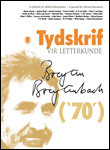Die vlugtige taal van vergeet: Die metafoor by Breyten Breytenbach
DOI :
https://doi.org/10.4314/tvl.v46i2.44419Mots-clés :
metaphor, signifier, signified, relationshipRésumé
From his first book of poetry, Die ysterkoei moet sweet (“the iron cow must sweat”, 1964), till his most recent one, Die windvanger (“the windcatcher”, 2007), metaphor has been a central means towards the creation of meaning for Breytenbach. This article will investigate the use of metaphor particularly in this recent book. Theorising will begin at the beginning, at Aristotle’s De Poetica and Rhetorica, where “simile” and “metaphor” are seen as the means toward seeking the relationship between signifier and signified. The poem “New York, 12 September 2001” is the focus of this relationship. Here the fallibility of the word in attempting to represent that tragedy (of the 11th) is illustrated. The theme of the poem is stated in its first lines: “will the hand continue to move on paper/ will any poem ever have enough power …” This article eventually comes to the conclusion that Breytenbach’s use of the metaphor can be summarised in the words of Aristotle: “It is a great thing indeed, to make proper use of the poetical form […] But the greatest thing by far is to be a master of metaphor”.
Téléchargements
Références
...
Téléchargements
Publiée
Numéro
Rubrique
Licence
(c) Copyright Tydskrif vir Letterkunde 2009

Ce travail est disponible sous licence Creative Commons Attribution - Partage dans les Mêmes Conditions 4.0 International.


 https://orcid.org/0000-0001-6465-6584
https://orcid.org/0000-0001-6465-6584


.png)